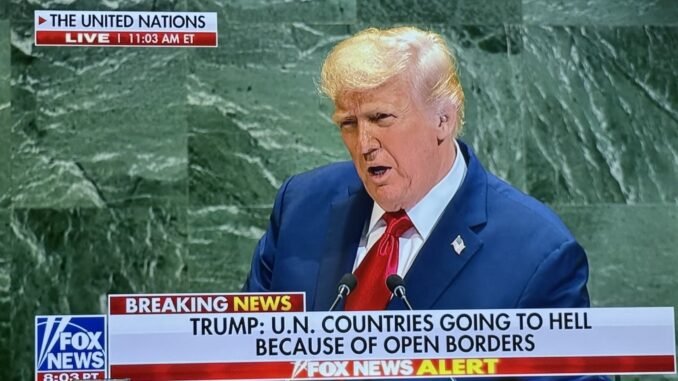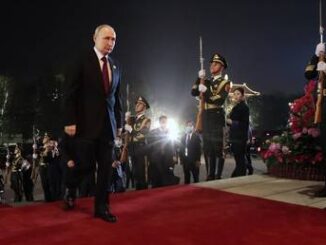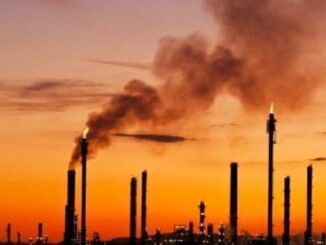
In a bold move that sent shockwaves through global energy markets, U.S. President Donald Trump urged European nations to immediately halt all purchases of Russian energy, including oil and natural gas. This call, renewed amid ongoing geopolitical tensions over Russia’s war in Ukraine, coincided with a rally in oil prices on Tuesday, with ICE Brent crude hovering just below $68 per barrel. The price surge was driven not only by Trump’s rhetoric but also by supply disruptions in Russia, including Ukrainian drone strikes on refineries and delays in restarting exports from Iraqi Kurdistan.
While markets reacted to the potential for tighter global supplies, the proposal raises profound questions about Europe’s energy security, economic stability, and the feasibility of fully severing ties with Russian fossil fuels. Trump’s push aligns with broader U.S. efforts to isolate Russia economically, emphasizing that NATO allies—particularly in Europe—should cease funding Moscow’s war machine through energy imports. He specifically targeted lingering dependencies, including direct oil purchases by countries like Hungary, Slovakia, and Turkey, as well as indirect flows through refined products.
This comes as the European Union (EU) has already made strides in reducing its reliance on Russian energy since the 2022 invasion of Ukraine, but significant vulnerabilities remain.
.@POTUS: “Energy is an area where the United States is now thriving like never before…All green is all bankrupt.” pic.twitter.com/CydeUqKvED
— U.S. Department of Energy (@ENERGY) September 23, 2025
Europe’s Lingering Dependency on Russian Energy
Despite aggressive diversification efforts under the REPowerEU plan, which aims to cut energy waste, boost clean energy production, and diversify supplies, Russia still accounts for a notable share of Europe’s energy mix.
In 2024, Russian supplies made up approximately 19% of the EU’s natural gas imports, down from 45% pre-war levels.
This includes around 52 billion cubic meters (bcm) of gas and 13 million tons of crude oil annually.
The EU has pledged to phase out all Russian fossil fuels by 2027, but recent data shows imports persisting, with the bloc paying Russia nearly €979 million for fossil fuels in August 2025 alone, primarily for natural gas.
A key loophole in current sanctions involves refined petroleum products derived from Russian crude, often rerouted through third countries like Turkey and India. Between June and August 2025, the EU imported nearly 400,000 barrels per day (bpd) of such products from these nations.
India, the largest buyer of discounted Russian crude, has ramped up exports of refined fuels to Europe, reaching $19.2 billion in 2023-24—more than double pre-war levels.
Similarly, Turkey serves as a conduit, allowing Russian oil to evade direct bans. The EU has proposed banning imports of products refined from Russian crude starting in 2026, potentially dropping the G7 price cap on Russian oil from $60 to $45 per barrel to tighten the noose.
Are you Paying High Taxes in New Jersey, New York, or California?
However, enforcement remains challenging, as these indirect imports effectively sustain Russia’s revenues while masking their origins.
Geopolitical Ramifications of a Full Cutoff
Halting these imports would deliver a significant blow to Russia’s economy, which relies heavily on energy exports to fund its military operations. An embargo could slash Moscow’s revenues, forcing it to redirect supplies to markets like China and India, where demand is growing but prices may be lower due to oversupply.
Geopolitically, this aligns with Trump’s vision of a united Western front against Russia and China, including tariffs on the latter to curb its influence.
For Europe, it enhances energy security by reducing vulnerability to Russian supply manipulations, such as the weaponization of gas flows seen in 2022. However, the move isn’t without risks. Russia could retaliate by further disrupting global energy flows, exacerbating supplier volatility amid ongoing conflicts.
Strains within the EU and NATO could emerge, particularly for landlocked nations like Hungary and Slovakia, which still depend on Russian pipelines.
Moreover, closing the “second-hand” refined product loophole might sour relations with India and Turkey, key emerging partners in global trade. India, defiant of U.S. pressure, is set to increase Russian oil imports in September 2025, underscoring the limits of Western influence over non-aligned powers.
Economic Impacts on the EUA abrupt cessation of Russian imports—direct or indirect—could trigger severe economic turbulence. Studies indicate that embargoes on Russian coal and oil would raise energy prices, leading to welfare losses and supply shortages.
Natural gas, comprising about 17-19% of EU supplies, is particularly critical for heating, power generation, and industry. A full cutoff without adequate alternatives could inflate prices, stoke inflation, and slow GDP growth, especially in energy-intensive sectors like chemicals and manufacturing in Germany and Eastern Europe. The EU’s energy dependency ratio stood at 58% in 2023, highlighting its import reliance.
While diversified LNG from the U.S., Qatar, and Norway has filled some gaps, infrastructure limitations and higher costs—LNG is often 20-30% more expensive than piped gas—could burden households and businesses.
In the second quarter of 2025, EU energy import values already dipped 13% year-over-year, but quantities remain high, signaling ongoing exposure.
Positive offsets include accelerated renewables deployment, potentially saving 40-50 bcm of gas by 2027 through efficiency measures.
Yet, a rushed phase-out risks short-term disruptions, with estimates suggesting Europe could manage without Russian energy but at the cost of higher bills and economic strain.
Can the EU Truly Break Free?
The question looms: Is the EU even capable of ditching Russian natural gas and oil entirely? The European Commission thinks yes, proposing a roadmap to end all dependencies by 2027, with national plans due by year’s end and an accelerated LNG phase-out by 2026.
This builds on REPowerEU, targeting diversified suppliers, expanded regasification terminals (e.g., Chevron’s investments in Europe), and a green transition.
Technically feasible, experts argue, through a mix of U.S. LNG, Norwegian gas, and renewables scaling up to offset 15 bcm annually via efficiency alone.
However, challenges persist: Long-term contracts must be exited, potentially incurring legal and financial penalties; infrastructure bottlenecks could delay diversification; and political will varies, with some member states resisting rapid changes.
Sunk costs in Russian pipelines and ideological divides further complicate the shift.
In summary, Trump’s pressure amplifies the EU’s ongoing divorce from Russian energy—a messy but necessary process. While oil prices jump in the short term, the long-term payoff could be enhanced security and a greener economy, provided Europe navigates the economic and geopolitical hurdles adeptly. As one analyst noted, the complete phase-out is “imperative” for economic, security, and climate reasons, but it demands unified action.
Avoid Paying Taxes in 2025
Crude Oil, LNG, Jet Fuel price quote
ENB Top News
ENB
Energy Dashboard
ENB Podcast
ENB Substack






